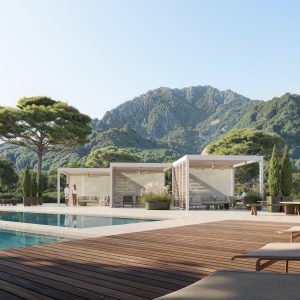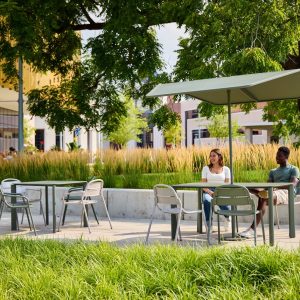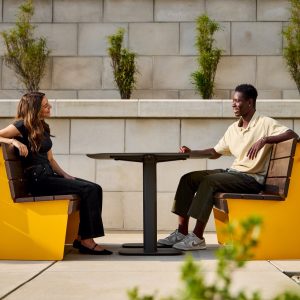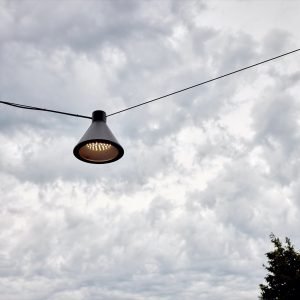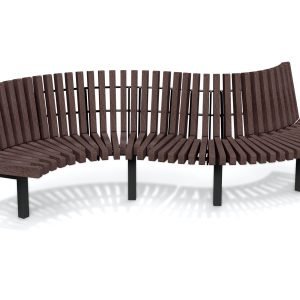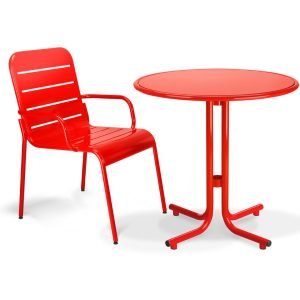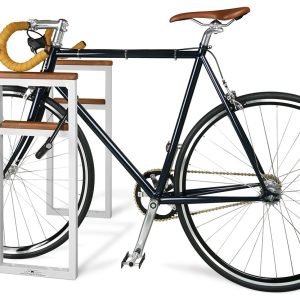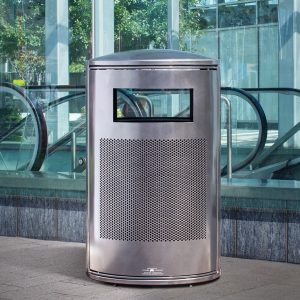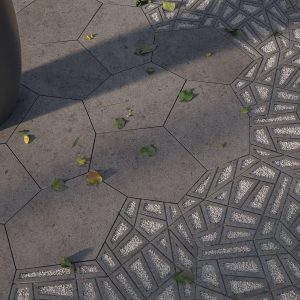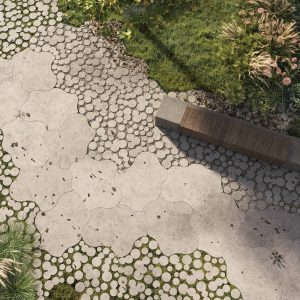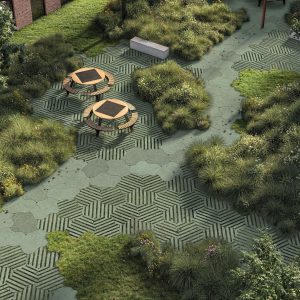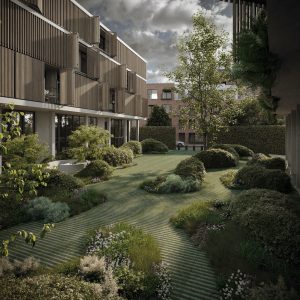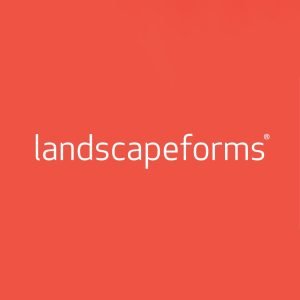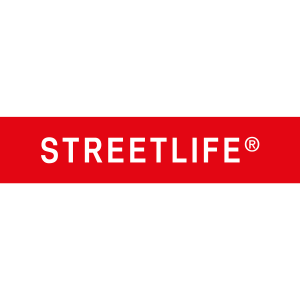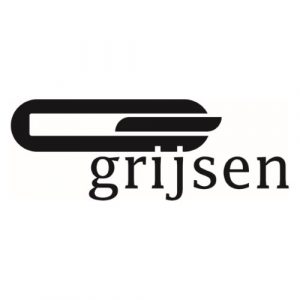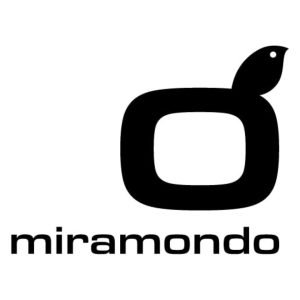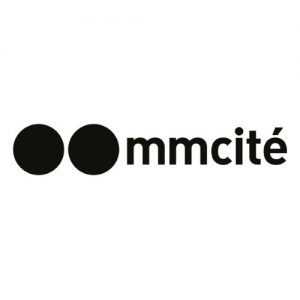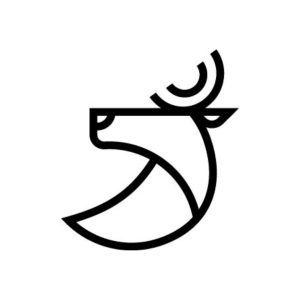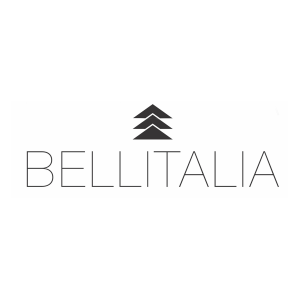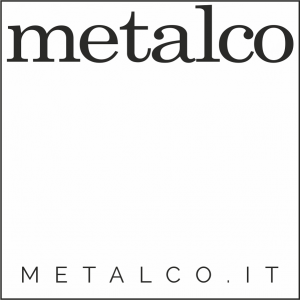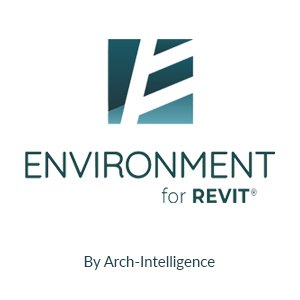The Dutch Landscape by Alexandra Tišma & Han Lörzing

The Dutch Landscape, The Ultimate Guide for Study, Professional and Personal Use by Alexandra Tišma[1] and Han Lörzing[2] is a “text-book” and a thorough yet very accessible guide on landscapes in the Netherlands – described from many angles and scales, historical, geographical, geological and biotic layers, cultural landscapes, from development, and planning to conservation – from large-scale national projects and policies to specifics of garden and landscape design and urban development, influenced by views on nature and ecology.
The book is organized into two main chapters as rural and urban landscape diptych – productive, infrastructure and enjoyable, residential landscapes. It’s a comprehensive study of the landscape and its parts, illuminating this sunken flatland.
We’ve spoken to Alexandra Tišma about the book and some bits of its extensive frame.
Polders are probably the most recognised typology of the Dutch landscape. Almost entirely man-made, sunken, diked, the Dutch landscape is the ultimate emblem of human influence over it. Also, the word landscape comes from Dutch lantscap. Please explain what is “the core” of the Dutch landscape formation.
Very essential for this country is that its landscape is in constant transformation. In Germanic languages the word land is used to describe a region or a territory, meaning both a place and the people living there. The suffix –scap (scape) means to shape, and relates to form. So the Dutch schappen has been here for ages, finally producing an entirely man-made landscape.
What is also remarkable is that the idea that everything is ‘makable’ is very present here and people do not hesitate to replace what is recently made. So the landscape changed its appearance several times in history. First natural forces were the predominant factor, but since the 11th century, man started to transform the landscape by creating dikes and polders. The largest transformations occurred in the last 100 years when the largest polders were created (Noordoostpolder and Flevoland) and when land consolidation for agricultural purposes took place.
Flat, unprotected from natural forces (sea and winds) this country had to develop ways to cope with nature so as to be able to survive, and this had a huge impact on the landscape. The constant fight against the water in the lower part of the country (nearly half of the whole area of the Netherlands) is a predominant factor in the landscape patterns that we can see now. Dikes and polders, inner lakes and windmills are the known landscape elements of the lowlands, you can see that in the photo below.
- New Dutch Waterline, Fort Tienhoven
Another important factor for which this landscape is known is agricultural production, intensive large-scale field crop production, cattle breeding and flower production in open fields, and the large areas for flower and vegetable production under glasshouses. It takes about 60% of the total area of the country so you can imagine that the visual impact is very dominant.
- Petten, North Holland, the bulb-growing region
And then on top of that – urbanisation, industrialisation, and infrastructure appeared in the mid-20th century. The image below illustrates this: the harbour of Rotterdam with the industrial landscape in the back, Westland with huge glasshouses in the middle, protected nature in dunes and the sandy coast with the recently created Zandmotor coastal reinforcement project.
- Zandmotor, The Hague
The Dutch landscape is very technological – with energy infrastructure, windmills and turbines scattered over the landscape.
Indeed technology is becoming an important factor in landscape development and design. The ideas of “Symbiocen”, the time when men, nature, and technology were brought together to create a new balance (brought by Australian philosopher Glen Albrecht) are becoming very popular in Dutch design. We see more and more examples of “Symbiotic” gardens nowadays, from smaller inner gardens in offices meant to bring relaxation and rest to employees to very large hi-tech campuses embedded in the natural environment (see design by Kruit Kok Landscape architects)
To make the land safe and useable, there are big national projects undertaken. It seems there is no such problem with cultural landscapes needing to look and behave as they did in history and technology is welcome. Can you describe some forward-thinking “standards” typical for the Netherlands?
The important large-scale projects of this century are Room for the River, Zandmotor and Marker Wadden. The idea behind these projects is to “design with nature” meaning to respect and use natural forces as the element of the design. Concerning organisation, it is also very Dutch to combine public and private stakeholders in the projects: government, private companies, design offices and the local community.
- Ecoduct De Borkeld on the highway A1 in Rijssen
In many cities, a lot is done about “greening”, climate regulation, the creation of socially attractive public places and stimulating green citizens initiatives etc. Among many others, only to mention some examples: Rotterdam for instance has a “roof revolution” and the city of the Hague is stimulating the development of the funny tree gardens (tiny gardens created by inhabitants around the trees in the streets where there is no other green space).
- Tiny gardens, Amsterdam
Please explain the term ‘nature development’, natuurontwikkeling. What are the paradoxes in landscape and man-made nature protection?
Nature development is a term that was introduced in the late 20th century by the Dutch national government. The reason was twofold: because of the expansion of agricultural production and urbanisation there was a lack of nature and what remained had to be strongly protected. But that was not enough so new nature areas had to be developed. Those areas were usually taken from agriculture, bought by the government and designated for nature. Nature that is now in these areas is designed and maintained by nature development organisations. There are several kinds of “nature” that can be found in these areas – marshlands, lakes, forests, and meadows (see Plan Ooivaar, also explained in the book).
Secondly – in the eighties, there was rising criticism of the nature conservation approach that created closed nature areas where the presence of humans was seen as a disturbance. In many cases, these areas were inaccessible to people. In a country with a lack of space for recreation and nature admiration, nature conservation became unpopular. Nature development (natuurontwikkeling) was then a new approach, and it implies not only protection but also the development of the new nature including the presence of humans.
It’s also an interesting concept of national landscapes you mention in the book – rarely is a landscape de facto produced by a nation. In Slovenia, we have a national park. That one is at the top of the conservation list compared to regional parks. We, however, don’t have “national landscapes” designated as such — which is why I find it an interesting distinction.
It is interesting that you read this as “landscape produced by a nation”. Actually, the name “national” is very political – these areas were protected by the national government (there are also areas that are protected by provincial and municipal governments) so that is why they are called national. Those areas are very large and stretch over the borders of provinces, for instance, the National landscape Green Heart goes through three provinces (South and North Holland and Utrecht). We also have 21 National parks in the Netherlands, but they differ from National landscapes. National parks are the core of natural areas which are protected in other ways. A National park is a branding name for areas protected by Natura2000, NNN (Nature Network Netherlands) or other ways, meaning that these territories can overlap.
Many of the vegetables we eat in Europe come from the Netherlands. Also potted plants and planting material often come from Dutch nurseries. It seems like the Netherlands as a whole is an experimental lab in many ways — how to produce land, and food throughout the year, grow vertically, manage floods, live on the water, desalinate ground …
That is completely true! It is indeed a laboratory, people here do not hesitate to tear down and build the buildings again, parks or parts of the landscape. For instance, there are plans to redesign the Museumplein in Amsterdam (was designed by Sven-Ingvar Andersson and built in 2007) and the Museum Park in Rotterdam (designed by Yves Brunier in 1992) was rebuilt a few years ago.
- The Museum Park Rotterdam, Depot Boijmans van Beuningen by MTD and MVRDV
Perhaps as the “essence” of this landscape is reclamation and producing the land, there is less friction with conservation and projects can be less detained.
There is always friction between “hard” spatial functions such as infrastructure and urbanization because the land scarcity and many overlapping plans. In the end, when it comes to economic importance nature is always a victim. But compared to many East-European countries here it is much more difficult to destroy nature due to protection regulations.
The Netherlands has many immensely important figures in landscape architecture and garden design. Perhaps one of the most interesting Dutch ‘designers’ is ecotect Le Roy. He and Zonderwijk pioneered the new ecologies that influenced the ecological park typology. Also to mention is the picturesque expressionist Piet Oudolf and many many contemporary designers.
There are many important landscape designers in The Netherlands. When it comes to contemporary projects, for our book we had difficulty with what to choose because there are many good designers and remarkable projects. So, we developed our methodology: the projects were selected by reviewing professional Dutch publications, and by using examples that are given to the students at the Faculty of Architecture in Delft, University of Wageningen and Amsterdam Architecture Academy.
- Louis le Roy, Ecocathedral. Image by Peter Wouda
Next to the two names that you mentioned there are more examples in our book. I would point out several, starting from old ones, dealing with large-scale projects to young offices that are innovative and/or well-known.
If we talk about large-scale projects the most known are H+N+S landscape architects, they have existed since 1990. Dirk Sijmons was the director of this office and he had a large impact on connecting landscape architecture with ecology and applying it to projects that focus on sustainability and climate regulation. His ideas about urban metabolism were broadly used.
Another very well-known designer is Adriaan Geuze, who established West8 in 1987. His approach is specific in the sense that he often designs urban plans and applies landscape design principles to urban planning (an example is his design for the Strip S in Eindhoven of Borneo-Sporenburg in Amsterdam).
As you see both H+N+S and West8 are much different from Piet Oudolf, who is mostly working with planting schemes and plant material. Sijmons is an architect by education, Geuze is a landscape architect and Piet Oudlof is partly self-educated. He is a plant expert and had a nursery at his house in Hummelo where people could come twice a year to view his garden and buy plants. I was once there; it was crowded with people from the whole Netherlands and Germany (Hummelo is on the German border).
Some interesting young offices are Dakdokters (now Ginkel Group), Joost Emmerik, Delva Landscape Architecture, Studio Marco Vermeulen, LOLA, Sant en co., etc, etc.
I find it interesting how you conclude that eclecticism will prevail in the future design of parks, yet new expressions for complex designs mixing wilded grounds with more formalist forms, natural and man-made materials, will be needed. What are the main Dutch landscape architecture aesthetics you would like to point out, what are the archetypes?
Nowadays in Dutch landscape design, the question of aesthetics is not the prominent one, although it is implicitly always present. Issues such as climate regulation, water management, energy production, sustainability, nature/biodiversity (in the cities), green infrastructure, public spaces, social interaction, and public participation are the focus of landscape designers. Hence, we could say that the views are broadened to neighbouring disciplines (ecology, planning, nature development). Nevertheless, geometry, openness, and order are prominently present in Dutch landscape design, which certainly has to do with the origins found in archetypes such as flat relief, open horizon, polders, dikes, sea, and clouds.
- Reeuwijkse lake, Gauda
What would you say about the Dutch landscape (and society) to landscape architects, planning to study or work there?
This is an excellent country to study landscape, there is a lot to learn, but as you can see from the contents of our book one can go in many directions and for each of them there are plenty of examples to find, literature to read, data and information to analyse. So, take our book as a starting point and choose the subject, area, or field you would like to go deeper in.
Finally, I would like to add something about the history of how this book came into existence. The motivation to write this book was my own experience. When I came from Novi Sad to the Netherlands in 1991 and started to work at the Faculty of Architecture in Delft, I asked my colleagues whether they could advise me on some literature about the Dutch landscape. Well, they could, there were plenty of books in Dutch, and a few were in English but those were not comprehensive, they rather treated one subject too much in detail which was too complicated to understand for a foreigner. It took me a few years before I could speak Dutch and read those writings. Mind you, at that time we didn’t have internet and Google translate.
Nowadays my foreign students and colleagues have all these tools but often they get lost in the amount of information and sometimes unreliable sources. Therefore, I thought that it would be helpful for people who are spending a short time here as students, professionals or just visitors interested in the landscape to have a book I missed when I came here. My ex-colleague Han Lörzing who used to teach landscape architecture at the Faculty of Architecture in Eindhoven had a tiny reader in English which was the only comprehensive text about the Dutch landscape in English, but it was from 10 years ago. So, I asked Han to join me in this project and we decided to use his reader as a starting point and then added some updates. Well, that was naïve. We spent another year writing updates but also adding missing chapters, looking for images, and finding subsidies and the publisher. Luckily we realised that as our book was unique it was not difficult to find subsidies and it was readily accepted by the renowned Dutch publisher nai010. We were also very lucky to be able to choose a great designer to do the layout of the book, Yvo Zijlstra, who found wonderful images which really enriched the book.
It would be nice if other countries would have a similar book as ours about their landscape, is there a book that you know of? How about the Slovenian landscape?
Well, I’m not aware of any. We have books on the Slovenian landscape that are specifically written for professionals and students in the field but not available in English. Perhaps someone from our readers drops a recommendation.
__________________________________
Short bio of the book authors:
[1] Alexandra Tišma is a Landscape and Spatial Planning Expert, Educator, and Researcher. Tišma has been a tutor in academic writing at the Amsterdam Academy of Architecture since 2009. She combines this role with over 20 years of experience as a senior researcher at PBL Netherlands Environmental Assessment Agency in The Hague. Alexandra’s career spans various academic and research positions, including roles as a researcher and lecturer in the Urban Planning department at the Faculty of Architecture, Delft University of Technology, and as an Associate Professor in Landscape Planning at the Faculty of Agriculture, Novi Sad, Serbia. She has widely published research and other publications.
[2] Han Lörzing is trained as a landscape architect at Wageningen University. He began his career as a park designer. Later, he worked as a project manager for municipal and provincial planning agencies, taught landscape and park architecture at the Eindhoven University of Technology, and became a researcher in town and country planning. He was also the co-founder of a planning and design consultancy and an associate with an urban planning office in London. Lörzing wrote several books on landscape and environmental art as a freelance author for professional and general audiences.
Published on November 26, 2024









